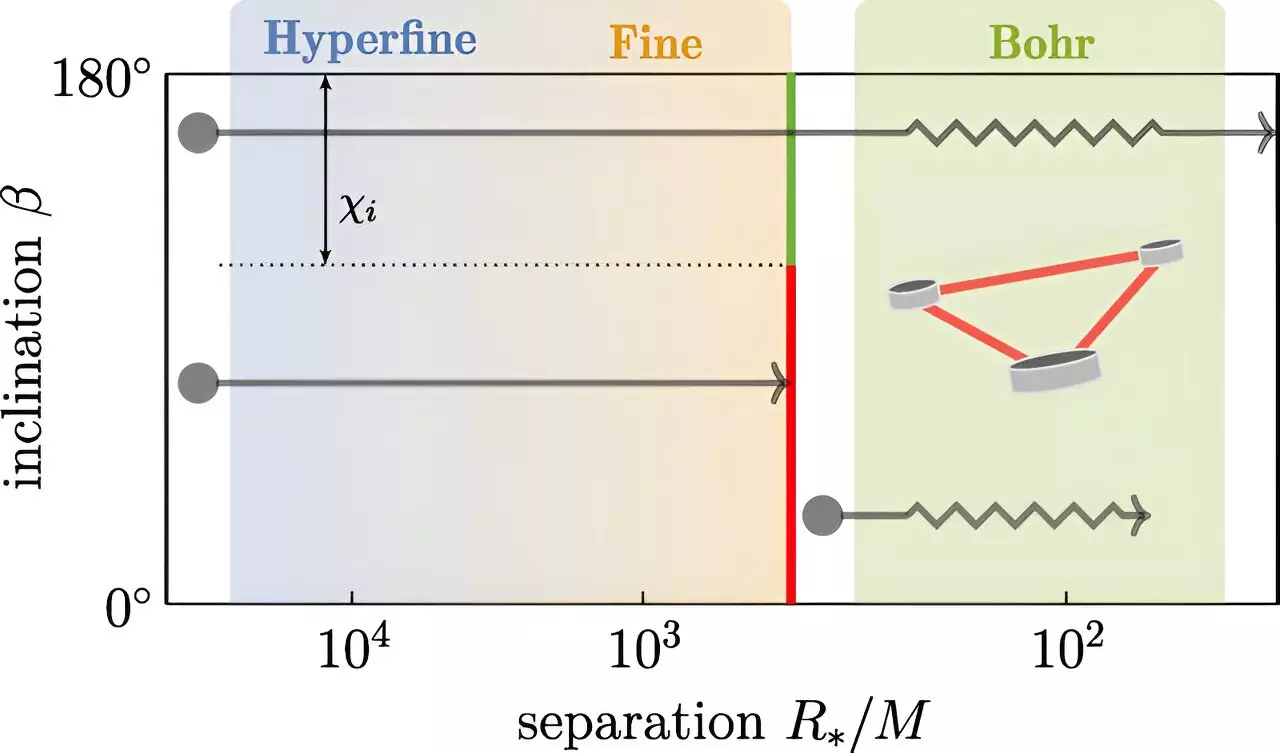Recent advancements in theoretical physics have opened new avenues for understanding the universe we inhabit. A groundbreaking study published in *Physical Review Letters* by a collaborative team of physicists from the University of Amsterdam (UvA) and the Niels Bohr Institute in Copenhagen presents the intriguing possibility that analyzing gravitational waves produced by merging black holes could uncover evidence for previously unknown particles. This research builds on a series of discoveries by UvA scientists over the past six years and offers a compelling connection between astrophysics and particle physics.
Gravitational waves are essentially ripples in the fabric of spacetime, generated by the acceleration and merger of massive celestial objects, like black holes. These waves carry rich information about the merging bodies: their mass, spin, and orbital dynamics. The study highlights the immense potential of gravitational waves as analytical tools. By scrutinizing the waveforms of black hole mergers, researchers may find subtle signatures that suggest the presence of novel particles, specifically ultralight bosons—hypothetical particles predicted by various models in theoretical physics.
Black Hole Superradiance: A Gateway to New Discoveries
The mechanism of black hole superradiance serves as the focal point for this research. When a black hole rotates rapidly, it can shed mass into a surrounding cloud of ultralight bosons. This phenomenon mirrors the behavior of electrons around atomic nuclei, leading researchers to describe the black hole-cloud system as a “gravitational atom.” The implications of this analogy are profound, as they suggest that the evolution of binary black holes can shed light on the fundamental particles that comprise our universe.
One of the most significant findings from this line of research is the identification of resonant transitions within the particle cloud. These transitions, akin to an electron moving between energy states in a traditional atom, prompt transformative changes in the cloud’s state. Additionally, the phenomenon of ionization, where parts of the cloud are expelled, offers further possibilities for detecting ultralight particles. Both processes have unique signatures in the gravitational wave emissions, depending on the largely unknown characteristics of the particle cloud.
The UvA and Copenhagen researchers meticulously merged their past findings to construct a comprehensive model tracing the history and interaction of binary black holes and their ultralight boson clouds. Their study elucidates two potential outcomes for black hole and cloud interactions. If the black holes’ rotation is anti-correlated, the particle cloud could persist and allow for detectable ionization effects; thereby producing a characteristic signal in the gravitational waves. Conversely, in other scenarios, resonant transitions could obliterate the cloud and impart specific orbital properties to the binary black holes.
This creates an innovative dual approach to searching for ultralight bosons. Each outcome affords a distinct methodology for detection: one via clearly defined signatures from ionization events and the other through the statistical observation of eccentricity and inclination in black hole systems. As future gravitational wave observatories—like LIGO and Virgo—enhance the precision of their measurements, this framework holds promise for answering whether such new particles exist.
The Broader Implications for Science
Beyond the scope of black hole physics, this research resonates with several ongoing questions in astrophysics and cosmology. The existence of ultralight bosons could illuminate longstanding puzzles relating to dark matter, the universe’s accelerating expansion, and other enigmas that challenge our understanding of fundamental physics. As scientists prepare for more advanced gravitational wave observations, the insights from the UvA team pave the way for potentially paradigm-shifting discoveries in our quest to comprehend the underlying structure of the universe.
The intersection of gravitational waves and particle physics is not merely an academic exercise; it embodies a compelling frontier in our understanding of reality. The careful analysis of cosmic phenomena could ultimately bridge gaps between disparate domains of knowledge and, perhaps, usher in a new era of scientific inquiry that reshapes our understanding of matter, energy, and the very nature of existence.



Leave a Reply